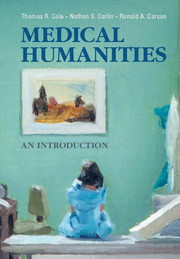Book contents
8 - Aging in Film
from Part II - Literature, the Arts, and Medicine
Summary
Age has long been Hollywood’s nightmare.
– Sally ChiversAbstract
This chapter explores portraits of aging and old age in film. Beginning with a discussion of early Hollywood’s cult of youth, it examines the slow emergence of aging characters in the 1950s and 60s; the themes of intergeneration and regeneration that frequently drove the plots of films depicting old age in the 70s and 80s; and the variable and complex images of aging presented in more recent age-related films. Then, with a focus on issues such as late-life sexuality and the trope of the “aging cowboy,” it considers some of the ways that contemporary film has challenged negative stereotypes and images of old age.
INTRODUCTION
In the last quarter of the twentieth century, western societies entered an unprecedented era of mass longevity and aging. Most people could expect to live into their seventies in reasonably good health, while those eighty-five and older became the fastest-growing age group in the population. Yet as we have seen in Chapter 5, “The Health of Populations,” the dark side of this triumph was an epidemiological transition in which chronic disease replaced infectious disease as the primary cause of mortality. Mass longevity came with a price tag: many older people now experience periods of disability, frailty, dementia, pain, and may suffer a prolonged death in intensive care units. In addition, western (and especially American) culture remains plagued by ageism – a pattern of prejudice and discrimination toward older people and old age, analogous to sexism and racism. Ageism and hostility toward the aging process are clearly reflected in the contemporary medical and popular ideal of “anti-aging” – the notion that one can grow old without aging. Despite our cultural illiteracy about how to grow old, the modernization of aging has generated a host of existentialand moral questions that are largely suppressed in popular culture: Is there an intrinsic purpose to growing old? Is there anything really important to be done after children are raised, jobs left, careers complete? What are the avenues of spiritual growth in later life? What are the roles and responsibilities of older people? Who should care for old people who are frail and sick? Is wisdom an illusion or an accomplishment of those who pursue it? Is there such a thing as a “good old age?”
- Type
- Chapter
- Information
- Medical Humanities , pp. 138 - 152Publisher: Cambridge University PressPrint publication year: 2014

